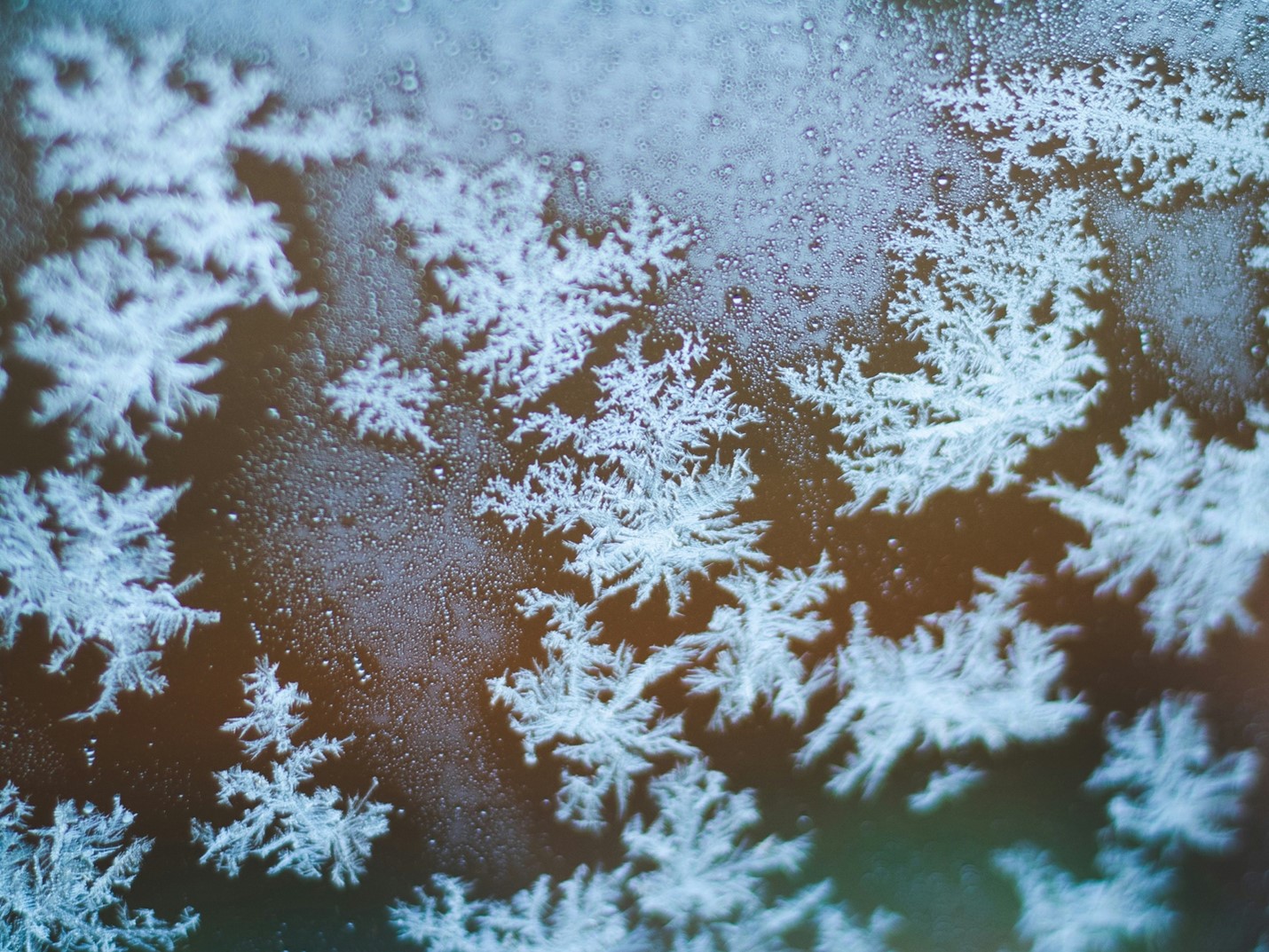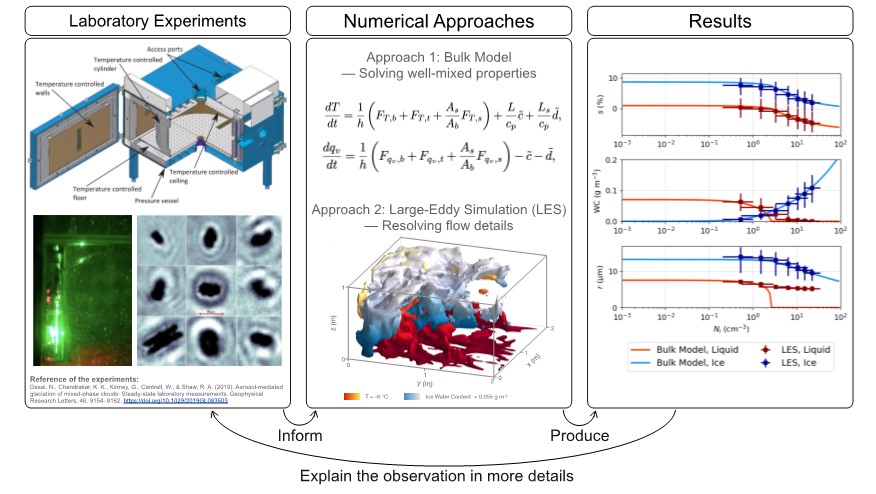Modeling the glaciation of mixed-phase clouds in the laboratory
Submitter
Ovchinnikov, Mikhail — Pacific Northwest National Laboratory
Wang, Aaron — Pacific Northwest National Laboratory
Area of research
Cloud Processes
Journal Reference
Science
Clouds are one of the most uncertain components in numerical weather prediction and climate models. Mixed-phase clouds (those containing both supercooled liquid water and ice) can be especially challenging to represent. Theory predicts that when ice and liquid coexist in a cloud, ice crystals will grow while liquid droplets evaporate. This is because water vapor deposits onto ice more easily than it condenses into liquid. However, laboratory experiments in a convection cloud chamber found that a certain amount of liquid always survives. Using numerical simulations to reproduce the laboratory experiments, this study reveals that liquid droplets are present near the bottom surface, which warms and moistens the air in the chamber. These droplets exist even in experiments when the ice crystal concentration is high, and the interior of the chamber is dominated by the ice phase. The surviving liquid, however, has little effect on the chamber mean cloud properties and their dependence on the ice number concentration.
Impact
This research demonstrates how two different numerical approaches can be used to reproduce, interpret, and extend the results observed in the convection cloud chamber. The simplified bulk model efficiently estimates the mean cloud properties for varying experimental inputs, while the more sophisticated three-dimensional simulations reveal more detailed cloud structure to explain the laboratory observations. These simulations show that, in a dynamic system, the cloud is not completely glaciated because liquid water droplets are continuously produced near the warm lower boundary and subsequently mixed into the chamber interior.
Summary
This study uses two numerical approaches to reproduce the results of cloud formation in laboratory experiments. A bulk model assumes a well-mixed domain and efficiently estimates the mean cloud properties for a wide range of conditions. The large-eddy simulation (LES) approach provides more details by resolving the turbulence and spatial variations in cloud particle properties. These modeling approaches enable a separate examination of liquid and ice properties, which is challenging to perform in the laboratory. Both approaches demonstrate common trends in the flow and microphysical properties in response to an increasing concentration of ice crystals. The main difference between the two approaches is that the bulk model predicts a complete glaciation of the cloud, while the LES reveals the continuous formation of liquid droplets near the warm bottom before they evaporate or freeze upon subsequent mixing into the chamber interior. Regardless of the differences, the general agreement of both models to the laboratory experiment provide confidence in their real-life applications when studying and forecasting naturally occurring mixed-phase clouds.



